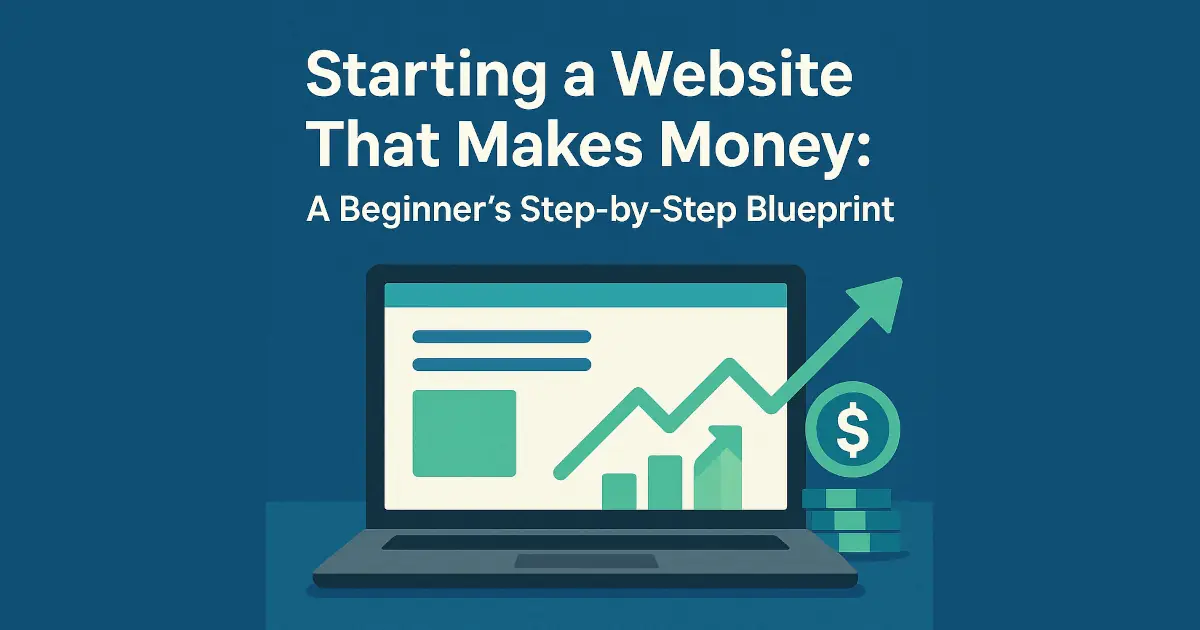In today’s digital age, creating a website is one of the most effective ways to make money online. Whether you want to sell products, offer services, or monetize content, a well-structured website can generate passive income, build brand authority, and open multiple revenue streams.
This report provides a step-by-step guide on how to set up a profitable website and monetize it effectively.
Selecting the right niche is crucial for long-term success. Consider:
Your interests & expertise – Choose a topic you’re passionate about.
Market demand – Use tools like Google Trends, Ahrefs, or SEMrush to analyze search volume.
Monetization potential – Some niches (e.g., finance, health, tech) have higher earning potential.
Affiliate marketing (e.g., product reviews)
E-commerce (selling physical/digital products)
Blogging (ad revenue, sponsored posts)
Online courses & coaching
SaaS (Software as a Service)
Keep it short, brandable, and easy to remember.
Use a domain registrar to register your domain now - use netprosoft hosting
Shared Hosting (Budget-friendly for beginners)
VPS Hosting (For scaling) - try netprosoft hosting
Cloud Hosting (High traffic)
WordPress (with Elementor/Divi) – Highly customizable.
Wix/Squarespace – Drag-and-drop, no coding required.
Hire a developer or use frameworks like React, Django, or Laravel.
Essential Pages to Include:
Homepage (Clear value proposition)
About Page (Build trust)
Contact Page (Email, social links)
Blog/Product Pages (SEO & monetization)
Without visitors, your website won’t make money. Use these strategies:
Keyword research (Use Ahrefs, Ubersuggest)
On-page SEO (Meta titles, headers, internal linking)
Backlink building (Guest posting, outreach)
Publish high-quality blog posts, videos, or infographics.
Repurpose content on Medium, LinkedIn, or YouTube.
Promote on Facebook, Instagram, Twitter, Pinterest, TikTok.
Engage with communities (Reddit, Quora, forums).
Google Ads, Facebook Ads, Native Ads (Outbrain, Taboola)
Once your website gains traffic, implement these income streams:
Promote products (Amazon Associates, ShareASale, CJ Affiliate).
Earn commissions (5%–50% per sale).
Google AdSense (Beginner-friendly)
Ezoic, Mediavine, AdThrive (Higher payouts, requires 50K+ monthly visitors)
E-books, courses, templates, software.
Platforms: Gumroad, Teachable, Podia.
Shopify, WooCommerce, Etsy
Sell physical products without inventory (AliExpress, Printful).
Offer premium content via Patreon, MemberPress.
Offer writing, design, coding, consulting (Upwork, Fiverr).
Partner with companies for paid promotions.
Email Marketing (ConvertKit, Mailchimp) – Build a subscriber list.
Automation Tools (Zapier, ChatGPT) – Streamline tasks.
Outsource – Hire freelancers (Upwork, Fiverr) for content, SEO, design.
Creating a money-making website requires planning, consistency, and smart monetization. Start with a niche you love, build high-quality content, drive traffic through SEO & social media, and diversify income streams.
With persistence, your website can grow into a full-time online business. 🚀
This report provides a step-by-step guide on how to set up a profitable website and monetize it effectively.
Step 1: Choose a Profitable Niche
Selecting the right niche is crucial for long-term success. Consider:
Your interests & expertise – Choose a topic you’re passionate about.
Market demand – Use tools like Google Trends, Ahrefs, or SEMrush to analyze search volume.
Monetization potential – Some niches (e.g., finance, health, tech) have higher earning potential.
Profitable Website Niches:
Affiliate marketing (e.g., product reviews)
E-commerce (selling physical/digital products)
Blogging (ad revenue, sponsored posts)
Online courses & coaching
SaaS (Software as a Service)
Step 2: Register a Domain Name & Get Hosting
1. Choose a Domain Name
Keep it short, brandable, and easy to remember.
Use a domain registrar to register your domain now - use netprosoft hosting
2. Select a Reliable Web Hosting Provider
Shared Hosting (Budget-friendly for beginners)
VPS Hosting (For scaling) - try netprosoft hosting
Cloud Hosting (High traffic)
Step 3: Build Your Website
Option 1: Use a Website Builder (Beginner-Friendly)
WordPress (with Elementor/Divi) – Highly customizable.
Wix/Squarespace – Drag-and-drop, no coding required.
Option 2: Custom Development (Advanced Users)
Hire a developer or use frameworks like React, Django, or Laravel.
Essential Pages to Include:
Homepage (Clear value proposition)
About Page (Build trust)
Contact Page (Email, social links)
Blog/Product Pages (SEO & monetization)
Step 4: Drive Traffic to Your Website
Without visitors, your website won’t make money. Use these strategies:
1. Search Engine Optimization (SEO)
Keyword research (Use Ahrefs, Ubersuggest)
On-page SEO (Meta titles, headers, internal linking)
Backlink building (Guest posting, outreach)
2. Content Marketing
Publish high-quality blog posts, videos, or infographics.
Repurpose content on Medium, LinkedIn, or YouTube.
3. Social Media Marketing
Promote on Facebook, Instagram, Twitter, Pinterest, TikTok.
Engage with communities (Reddit, Quora, forums).
4. Paid Advertising (Optional)
Google Ads, Facebook Ads, Native Ads (Outbrain, Taboola)
Step 5: Monetization Strategies
Once your website gains traffic, implement these income streams:
1. Affiliate Marketing
Promote products (Amazon Associates, ShareASale, CJ Affiliate).
Earn commissions (5%–50% per sale).
2. Display Ads (Ad Networks)
Google AdSense (Beginner-friendly)
Ezoic, Mediavine, AdThrive (Higher payouts, requires 50K+ monthly visitors)
3. Sell Digital Products
E-books, courses, templates, software.
Platforms: Gumroad, Teachable, Podia.
4. E-commerce (Dropshipping/Print-on-Demand)
Shopify, WooCommerce, Etsy
Sell physical products without inventory (AliExpress, Printful).
5. Membership & Subscriptions
Offer premium content via Patreon, MemberPress.
6. Freelance Services
Offer writing, design, coding, consulting (Upwork, Fiverr).
7. Sponsored Posts & Brand Deals
Partner with companies for paid promotions.
Step 6: Scale & Automate Your Website
Email Marketing (ConvertKit, Mailchimp) – Build a subscriber list.
Automation Tools (Zapier, ChatGPT) – Streamline tasks.
Outsource – Hire freelancers (Upwork, Fiverr) for content, SEO, design.
Conclusion
Creating a money-making website requires planning, consistency, and smart monetization. Start with a niche you love, build high-quality content, drive traffic through SEO & social media, and diversify income streams.
With persistence, your website can grow into a full-time online business. 🚀

